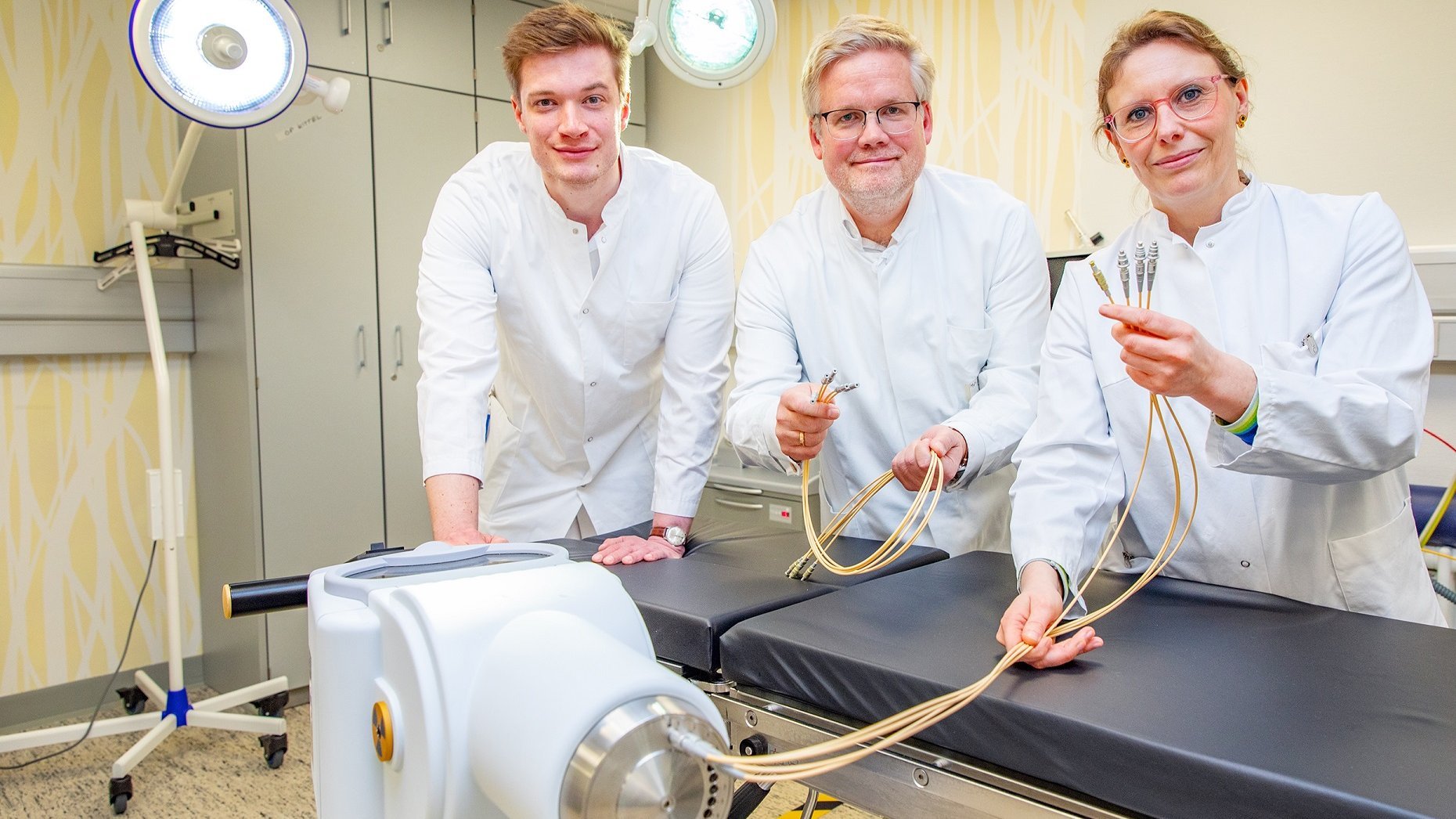MHH clinic uses interstitial brachytherapy for malignant tumors of the cervix.

The radiation beads reach the tumor via these tubes: Dr. Blach, Professor Christiansen and Dr. Meinecke (from left) demonstrate the device for interstitial brachytherapy. Copyright: Karin Kaiser/MHH
Alongside surgery and chemotherapy, radiotherapy is one of the central pillars of cancer therapy. Normally, radiotherapy fights a tumor from the outside. Brachytherapy is an exception to this rule. In this method, the radiation source is placed inside the body with a special device and thus in the immediate vicinity of the tumor. The Clinic for Radiotherapy and Special Oncology (in German) offers all forms of this therapy - including complex interstitial brachytherapy. The radiation source is introduced directly into the tumor. The cancer cells are fought "on site". Interstitial brachytherapy is a highly specialized procedure that is only carried out in a few facilities in Lower Saxony.
Radiation therapy generally aims to damage the genetic material of the cancer cells so that they stop dividing and die. However, "some tumors are difficult to reach from the outside with a sufficient dose," explains Professor Dr. Hans Christiansen, Director of the Department of Radiotherapy. This applies, for example, to malignant tumors on the cervix. "In such cases, interstitial brachytherapy is part of the standard therapy." His clinic therefore primarily treats patients with this diagnosis with the procedure. There is a specialized team for this under the direction of Dr. Daniela Meinecke, who is not only a specialist in radiotherapy but also in gynaecology.
"Pearls" unfold their effect
"With interstitial brachytherapy, we don't just get close to the tumor, but directly into it," explains Dr. Meinecke. The radiation source is introduced into the tumor in the form of small beads via tubes and thin needles. Up to 18 needles can be placed simultaneously and the radiation can be delivered with millimeter precision. This all takes place under computer tomography control. The radiation source only works for a few minutes at a time and is then immediately removed again. "This allows us to work with a high radiation dose and largely protect the surrounding tissue," says Dr. Meinecke. Patients are under general anesthesia during the procedure. A treatment procedure takes around two hours and has to be repeated three to four times at intervals of around one week. A new treatment plan is drawn up for each session together with medical physicists.
"In combination with external radiation therapy and chemotherapy, interstitial brachytherapy is very effective. Local control of cervical cancer is 80 to 90 percent," says Professor Christiansen. He is pleased to be able to offer this treatment to the often young patients. "This procedure is very complex and requires the expertise of many different specialists. We are lucky that everyone in the team pulls together." The interdisciplinary collaboration with the Women's Clinic and the Clinic for Anaesthesiology is particularly good. The aim is to establish brachytherapy for tumors of the skin and in the head and neck area in the future.
Meeting of young scientists
The Clinic for Radiotherapy and Special Oncology is committed to promoting the next generation of radiation oncologists. Dr. Robert Blach organized this year's spring symposium of the Young DEGRO (German Society for Radiation Oncology) with around 90 participants at the MHH. Information is available here.
Text: Tina Götting